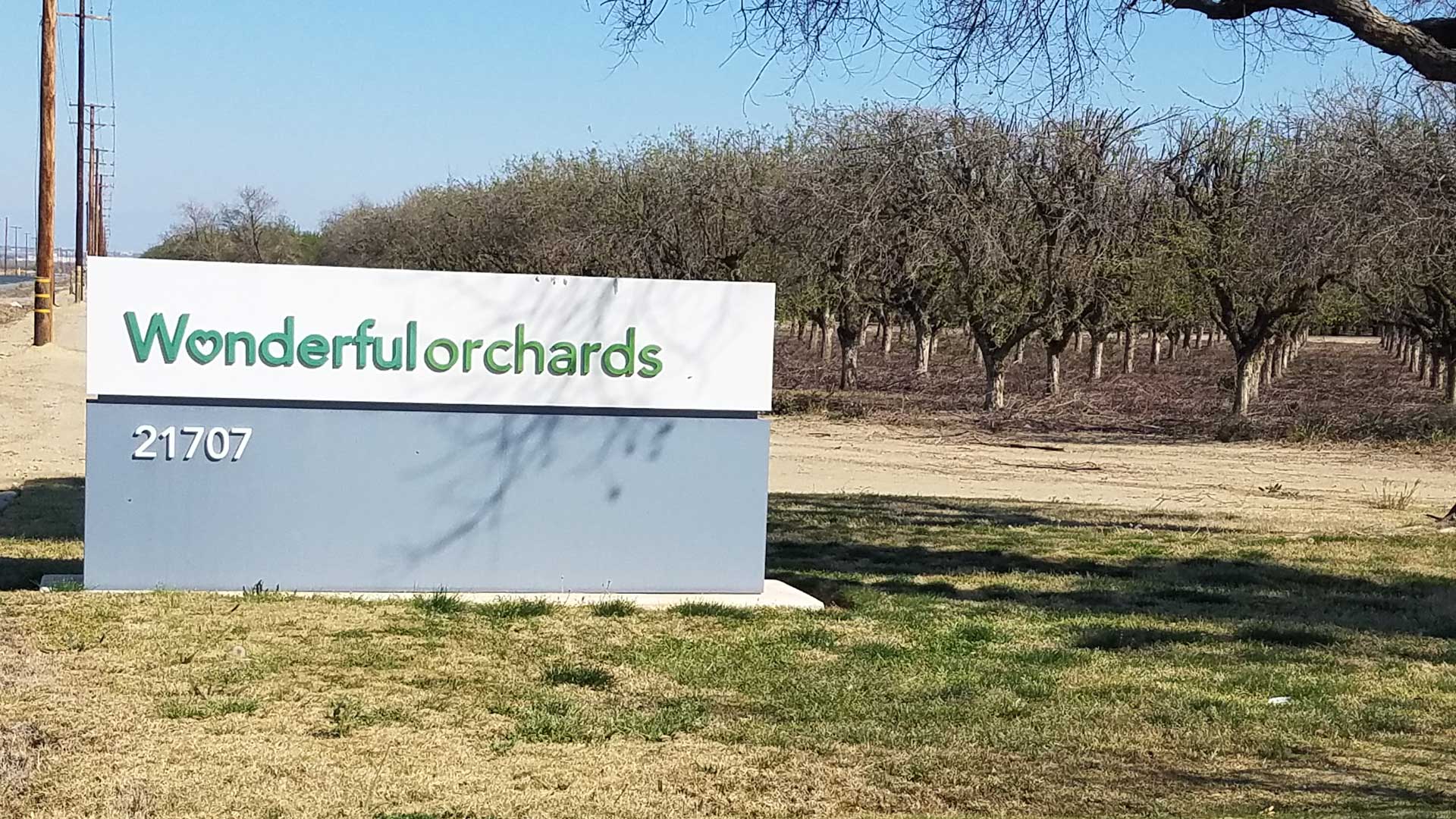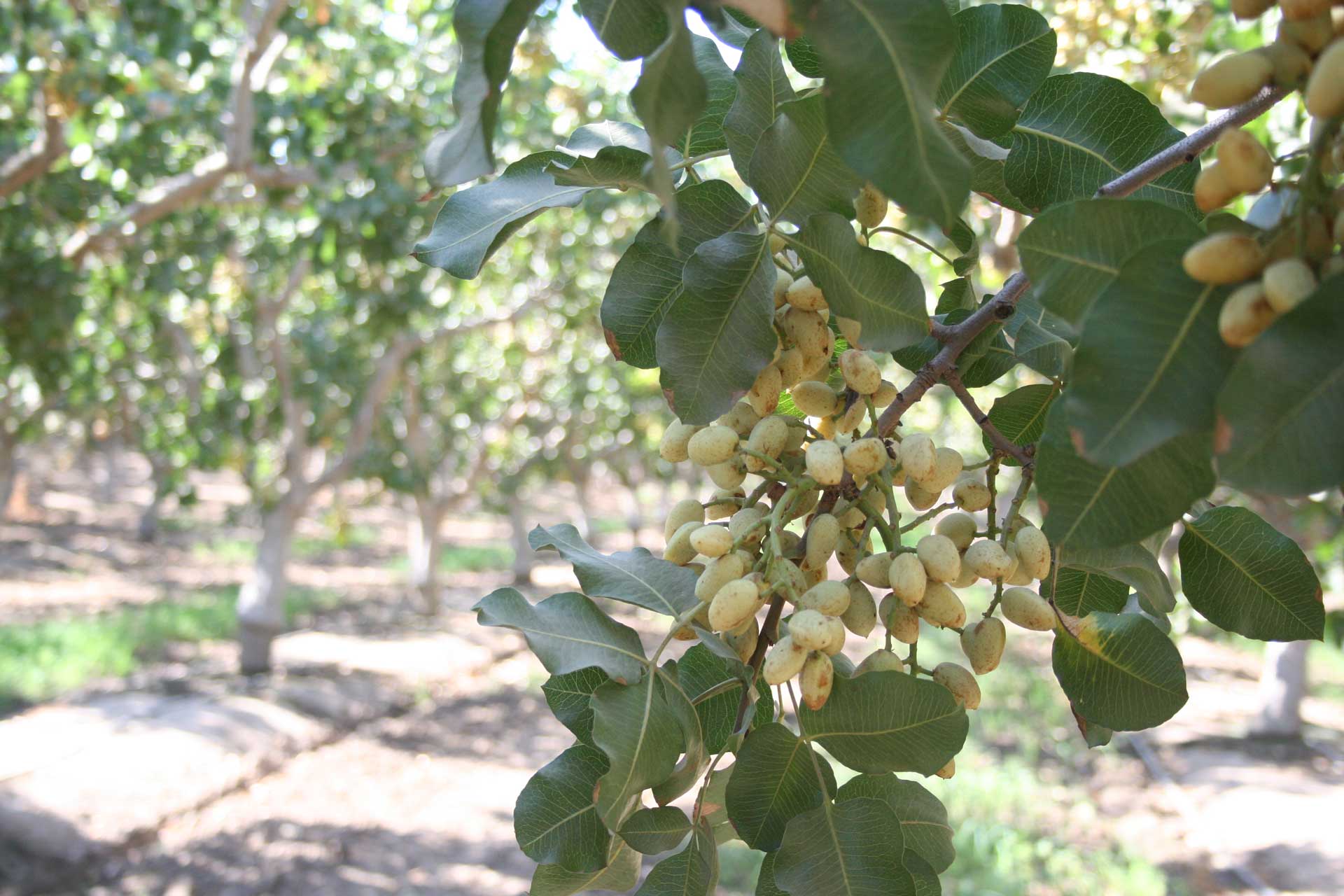
It might be easy to think the Wonderful Company is somehow impervious to the pressures confronting California’s tree nut industry.
It is, after all, the world’s largest grower and processor of pistachios and almonds. The company farms nearly 90,000 acres of tree nuts in the San Joaquin Valley and processes 700 million pounds of the two nut crops each year.
On top of that, Wonderful also processes and markets the crops of 900 independent pistachio growers, whose orchards stretch from Kern County to north of Sacramento. These “grower partners” deliver their crops to Wonderful from acreage that’s separate from the company’s 90,000 owned acres. Wonderful’s tree nut farming, processing and marketing operations, including Wonderful Orchards, are all part of the $5 billion Wonderful Company.
Leading Wonderful Orchards is Rob Yraceburu, a fourth-generation member of a Fresno farming family. Yraceburu spent 29 years with Wells Fargo Bank, where he headed its National Food and Agribusiness division. In 2015, he was approached by Stewart and Lynda Resnick, long-time customers of the bank and owners of the Wonderful Company. Wonderful Orchards’ long-time president was retiring, and the Resnicks asked Yraceburu to consider taking on the farming company’s top job. He joined as president later that year.
Today, Yraceburu oversees a team responsible for farming Wonderful’s pistachios and almonds as well as 10,000 acres of pomegranates and wine grapes. He also leads Wonderful Nurseries and the company’s bee and pollination operations. During peak season, Wonderful’s farming operations employ about 4,000 people and another 2,500 people for processing and marketing. The company operates five tree-nut processing facilities, from Firebaugh to Lost Hills.

Despite those impressive numbers, even Wonderful is contending with 2022’s tree nut industry pressures, including rising costs, slowing exports and lower prices. But, as Yraceburu shared in a late February interview with West Coast Nut, those challenges are driving Wonderful to look for new ways to maintain its tree nut success.
Q. What are the biggest challenges facing Wonderful’s tree nut production these days?
As with most players in the industry, we’re all facing a lot of challenges around higher input costs, pricing pressure for our crops, labor availability and water, just to name a few. The demand for our crops is the biggest motivator, and our top priority is to produce healthy, good-for-you food. We consistently evaluate all levels of our business, with an eye toward efficiency and sustainability, and we are making significant investments now and in the months and years to come. We have teams dedicated to advancing innovations, efficiency, technology, automation and sustainability.
Q. What’s an example of technology or automation you’re incorporating these days?
One example we are excited about is autonomous tractors. We are working with multiple manufacturers and innovators to test and develop new solutions. We are hopeful and will continue to weigh the up-front investment versus the potential efficiency savings.
Additionally, we do a significant amount of work regarding remote water sensing. We don’t just irrigate off the calendar. We irrigate based on what the trees need. We monitor evapotranspiration and tree stress using traditional infield soil sensors and pressure bombs as well as newer trunk sensors and aerial imagery.

Q. In terms of pricing, does Wonderful have an in-house or risk management team that sells the crop?
Nearly all almonds processed and marketed by Wonderful are produced on company-owned ranches. Our ability to impact almond markets is limited as there are over 100 handlers and we represent less than 4% of the industry.
Conversely, we are the leader in the California pistachio industry and annually process and market over half of the state’s crop. We market five to six times more pistachios than we do almonds. The majority of those are produced by our grower partners. As a result, our marketing efforts are focused on pistachios, where we can truly make a difference.
Our pistachio grower partners have enjoyed a better return, and our intention is to maintain that level of success for them. We’ve built our reputation on a steady, reliable supply of product to our buyers, and we’re always looking to differentiate ourselves. As industry leaders, we are constantly looking to develop new markets and introduce new products. Over the past decade, we led the growth of the California pistachio marketing efforts to China, which has now become the biggest consumer of California pistachios outside of the U.S. More recently, we launched the highly successful Wonderful No Shells line. And in the past ten years, our leadership has made pistachios not only the biggest but also the fastest-growing snack nut in the U.S.
Q. One of the consequences of this pandemic has been the supply chain crisis. How has that affected you?
The pandemic has put big burdens on supply chain and distribution channels, which has caused disruptions for many ag commodities, including nuts. It’s hard to get product shipped and moved to the consumer. As a result, inventories are growing, placing a downward pressure on prices. Only time will tell how quickly these disruptions are going to correct themselves and the long-term impact on prices. Furthermore, supply chain challenges have not only affected how we sell our product but have also reduced the availability and increased the cost of our inputs, including fertilizer, chemicals, packing material and more.
Q. What can you do about it?
There’s no easy answer. We are working with our business partners to look at more efficient ways of running every aspect of our business. We predicted the port challenges in August of last year and pre-shipped 60 million pounds of pistachios before we even had orders. We leveraged our size and industry knowledge to ensure our international customers were covered. We understand this is not the case for the entire industry, and their delay will result in industry opportunity loss and lower prices for growers. We obviously made the right decision to ship early, but the port challenges will continue to be a problem. It will take federal and/or state intervention to fix some of the systemic flaws in our ocean transportation system.
Q. What are your priorities for 2022?
Our top priority is to sell more nuts and to increase demand for our quality pistachios and almonds around the world. At the end of the day, we’re a company whose foundation is based on the people who live and work in the communities we serve. We believe investing in our employees results in excellence, and we have a long-standing commitment to the development and well-being of our employees. Finally, we are keenly focused on efficiency across our operations and will continue to address supply chain challenges through increased forward-planning.
Q. Where do you see California’s pistachio and almond industries three to five years from now?
Almond industry supply and demand will eventually become balanced. We’ve experienced distribution channel disruptions at the same time the industry has produced record crops. Combined, these factors have resulted in lower almond prices. Almond trees last 25 years and then need to be replaced. Given current prices, some growers will replace trees early, which will hopefully result in supply/demand coming back in line quicker.
Pistachios, on the other hand, are a tree crop that never dies. We have some of the oldest pistachio trees in the state. Some are 60 years old and still yielding within 10% of our newer plantings. There are enough young pistachio trees in the ground right now to double this crop in the next 10 years. So, the industry will need to devote resources and focus its efforts on increasing demand for pistachios both in the U.S. and globally.
Q. Do you see Wonderful expanding its tree nut operations in California?
Tree nuts continue to be a popular source of protein, and Wonderful will expand to meet demand. We have a long-range plan to invest significant capital and expand our processing capabilities and marketing efforts to ensure grower-partner pistachios are harvested in a timely manner and achieve the highest grower returns. We look at various growth opportunities all the time, but we don’t wake up in the morning and say, ‘Let’s grow today.’ We wake up in the morning and say, ‘Let’s be collaborative and challenge each other in how we, with our grower partners, get better.’ Growth may come out of that. But we’re not here just to get bigger.















